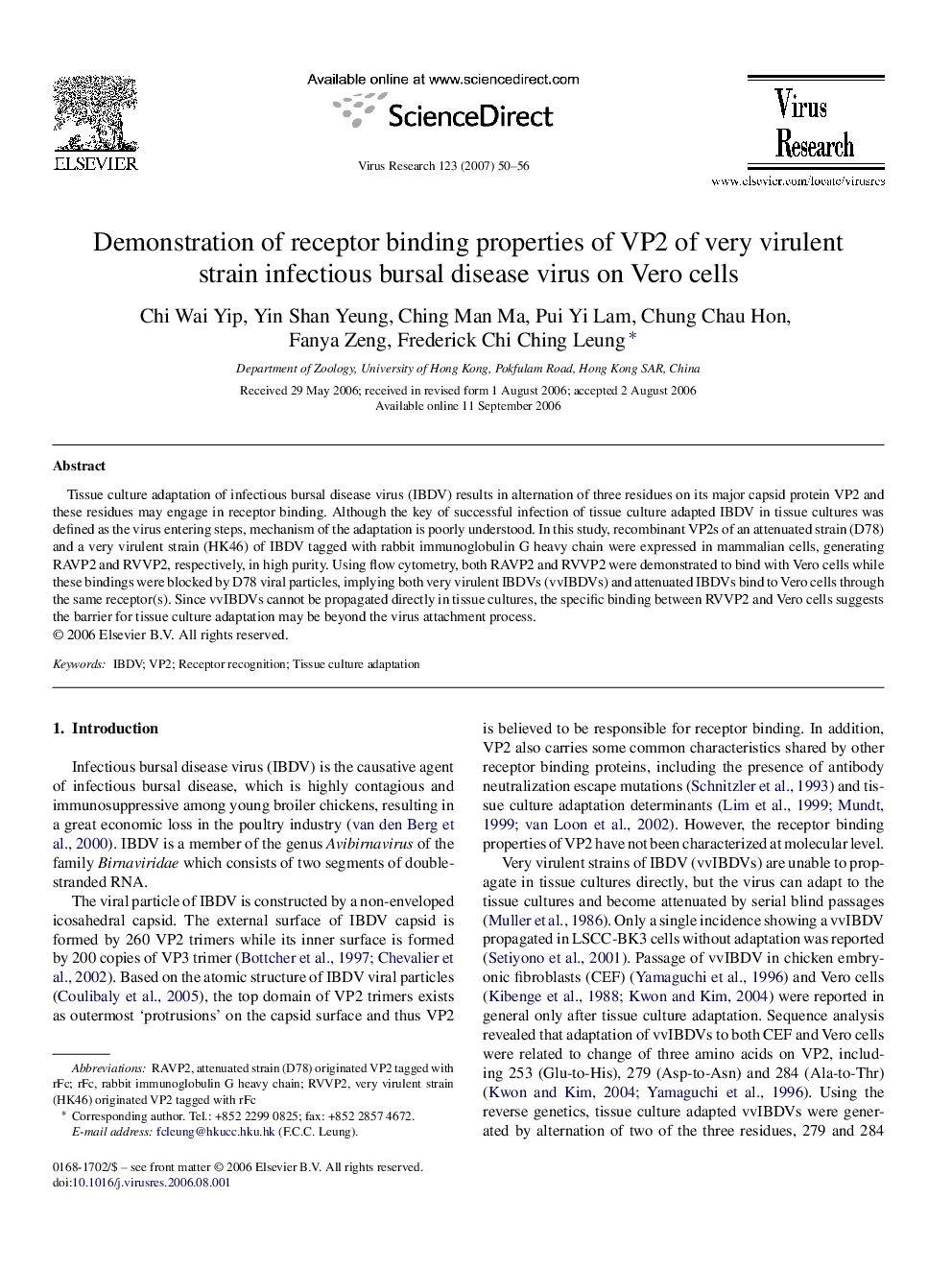| Article ID | Journal | Published Year | Pages | File Type |
|---|---|---|---|---|
| 3431095 | Virus Research | 2007 | 7 Pages |
Abstract
Tissue culture adaptation of infectious bursal disease virus (IBDV) results in alternation of three residues on its major capsid protein VP2 and these residues may engage in receptor binding. Although the key of successful infection of tissue culture adapted IBDV in tissue cultures was defined as the virus entering steps, mechanism of the adaptation is poorly understood. In this study, recombinant VP2s of an attenuated strain (D78) and a very virulent strain (HK46) of IBDV tagged with rabbit immunoglobulin G heavy chain were expressed in mammalian cells, generating RAVP2 and RVVP2, respectively, in high purity. Using flow cytometry, both RAVP2 and RVVP2 were demonstrated to bind with Vero cells while these bindings were blocked by D78 viral particles, implying both very virulent IBDVs (vvIBDVs) and attenuated IBDVs bind to Vero cells through the same receptor(s). Since vvIBDVs cannot be propagated directly in tissue cultures, the specific binding between RVVP2 and Vero cells suggests the barrier for tissue culture adaptation may be beyond the virus attachment process.
Keywords
Related Topics
Life Sciences
Immunology and Microbiology
Virology
Authors
Chi Wai Yip, Yin Shan Yeung, Ching Man Ma, Pui Yi Lam, Chung Chau Hon, Fanya Zeng, Frederick Chi Ching Leung,
